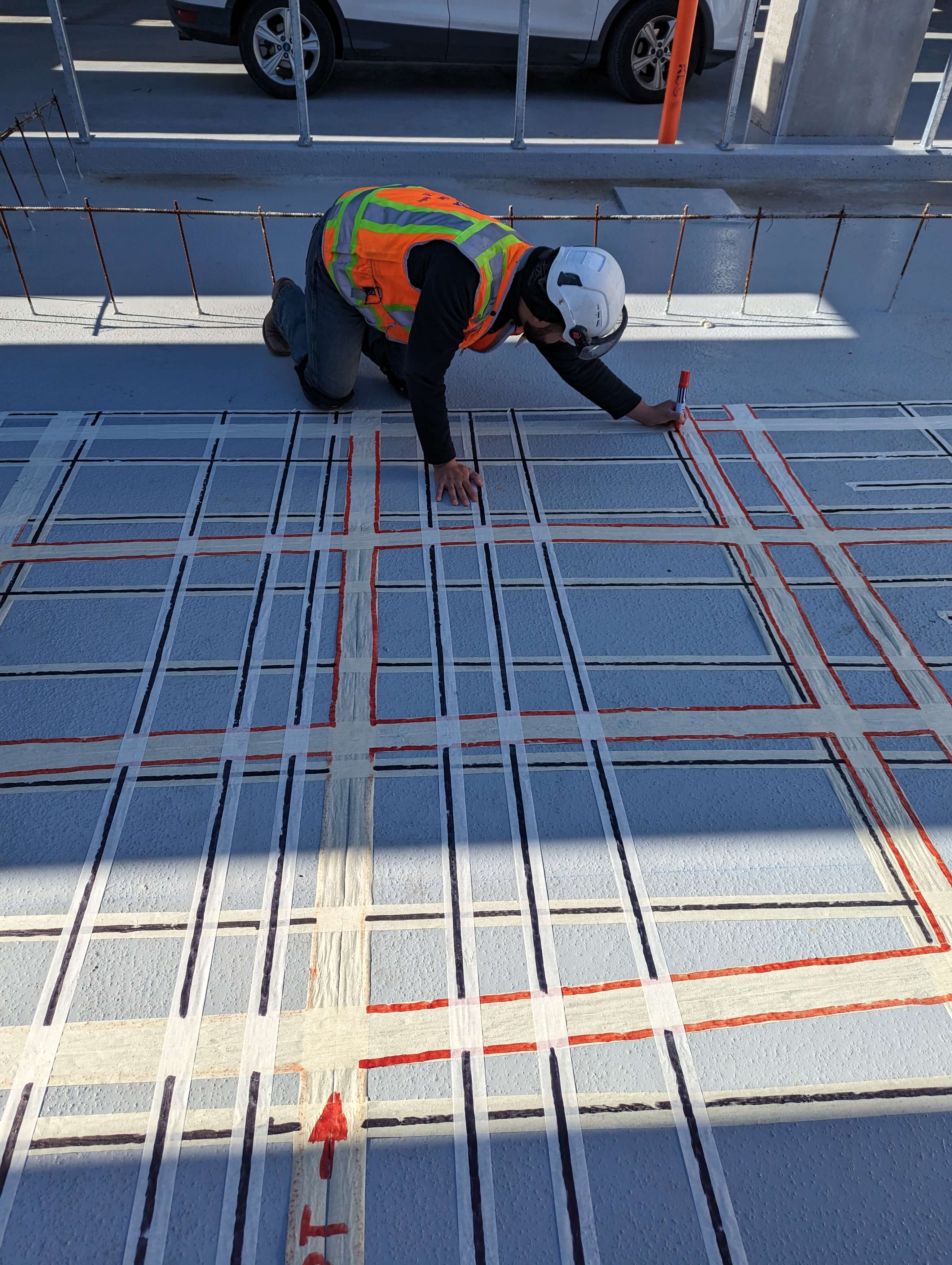The Significance of Expert Concrete Scanning Solutions
The Significance of Expert Concrete Scanning Solutions
Blog Article
Elevate Your Construction Refine With the Strategic Insights of Concrete Scanning for Improved Efficiency
One such innovation that has actually transformed the building and construction industry is concrete scanning. By utilizing the calculated insights offered by concrete scanning, building and construction professionals can unlock a realm of boosted productivity and streamlined procedures.

Advantages of Concrete Scanning
Enhancing project effectiveness and safety and security, concrete scanning provides a non-destructive approach for detecting covert things within concrete structures. By making use of modern technologies such as ground-penetrating radar (GPR) and concrete x-ray imaging, construction teams can accurately situate rebar, post-tension cords, electric channels, and other blockages before boring, reducing, or coring into concrete.
The advantages of concrete scanning are numerous. To start with, it decreases the risk of accidental damage to vital structural aspects, lowering the likelihood of pricey fixings and job delays. Secondly, it enhances worker safety and security by providing real-time insights right into the place of hidden threats. Building and construction sites can be intricate atmospheres, and knowing what exists below the surface area can stop injuries and crashes.
In addition, concrete scanning promotes total project effectiveness by protecting against and improving process rework. By determining possible issues at an early stage, groups can change their strategies proactively, conserving time and sources over time. In essence, the adoption of concrete scanning modern technologies is a calculated financial investment that pays rewards in regards to cost-effectiveness, performance, and safety.
Modern Technology Integration for Efficiency
Concrete scanning's capability to improve workflows and improve project efficiency can be further optimized via critical assimilation of cutting-edge technologies. By including Structure Info Modeling (BIM) software application into concrete scanning processes, construction teams can achieve a higher degree of precision and control. BIM permits the production of 3D models that supply thorough understandings into the task, enabling better decision-making and decreasing the chance of mistakes. In addition, the assimilation of Augmented Fact (AR) innovation with concrete scanning can improve on-site visualization, enabling project supervisors and workers to overlay electronic details onto the physical setting in real time. This can facilitate a lot more accurate positioning of elements and boost communication amongst staff member. In addition, making use of drones for aerial surveys along with concrete scanning can quicken data collection and evaluation, enabling much faster decision-making and progression monitoring. Generally, the calculated integration of these modern technologies can substantially boost performance and productivity in building and construction projects.
Staying Clear Of Costly Errors
Exactly how can meticulous interest to information during concrete scanning procedures help building and construction teams in preventing pricey errors? By utilizing innovative scanning technologies such as Ground Passing Through Radar (GPR) and electro-magnetic induction, construction teams can accurately identify rebar, energies, spaces, and various other obstructions within concrete structures. Furthermore, concrete scanning helps in ensuring structural honesty by identifying weak points or flaws in the concrete very early on, allowing for prompt repair work and modifications.
Enhancing Task Monitoring
Thorough interest to information during concrete scanning refines not just aids in avoiding costly errors however likewise lays a strong structure for reliable task management in construction ventures. By integrating concrete scanning modern technology right into project management techniques, building groups can enhance operations, boost interaction, and make sure that tasks remain on track.
Concrete scanning supplies useful insights right into the architectural honesty of existing components, permitting job managers to make informed decisions regarding design alterations or building and construction series. This aggressive technique visit this site reduces the danger of unexpected hold-ups or revamp, eventually saving time and resources. Additionally, the information gotten from concrete scanning can be integrated into Structure Details Modeling (BIM) systems, allowing real-time partnership and sychronisation among different stakeholders.
Moreover, concrete scanning assists project managers identify possible risks or barriers prior to they intensify into bigger problems, advertising a more secure work atmosphere for all included. With boosted visibility and accuracy offered by concrete scanning innovation, project supervisors can successfully plan, keep an eye on, and perform construction tasks with greater efficiency and self-confidence.
Taking Full Advantage Of Productivity
To improve productivity in building projects, carrying out reliable techniques and making use of advanced modern technologies is essential. Making the most of performance includes streamlining processes, optimizing source allotment, and decreasing downtime. One crucial aspect of maximizing performance is via the fostering of concrete scanning technology. By utilizing ground-penetrating radar (GPR) and other scanning approaches, building groups can precisely situate rebar, channels, and various other subsurface elements, decreasing the danger of pricey errors and hold-ups throughout excavation and boring.
Furthermore, accepting Building Info Modeling (BIM) software can considerably boost productivity by developing detailed 3D versions that boost job visualization and control amongst various trades. BIM enables for much better clash discovery, making it possible for concerns to be recognized and resolved before construction also starts, saving time and resources in the lengthy run.
Applying a lean building and construction technique, which concentrates on removing waste and enhancing effectiveness throughout all job stages, is one more efficient approach for optimizing performance. By fostering collaboration, communication, and constant enhancement, construction groups can function much more cohesively towards attaining job objectives in a streamlined and effective manner.
Final Thought
To conclude, the critical implementation of concrete scanning check in the building and construction process supplies many advantages, including raised efficiency, price savings, enhanced task management, and boosted performance. By integrating this innovation, building and construction teams can prevent pricey errors, improve their procedures, and optimize their general task use this link outcome. Concrete scanning is a valuable tool that can raise the construction process and result in even more effective and successful results.

Report this page